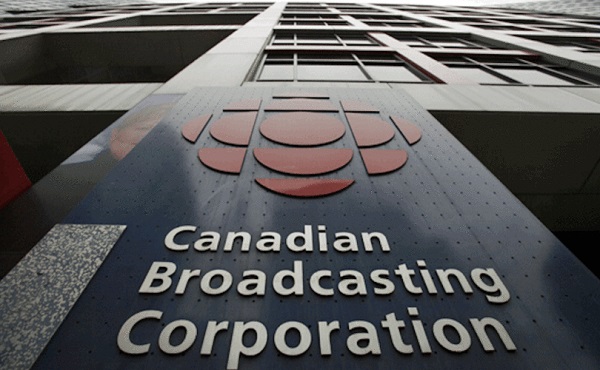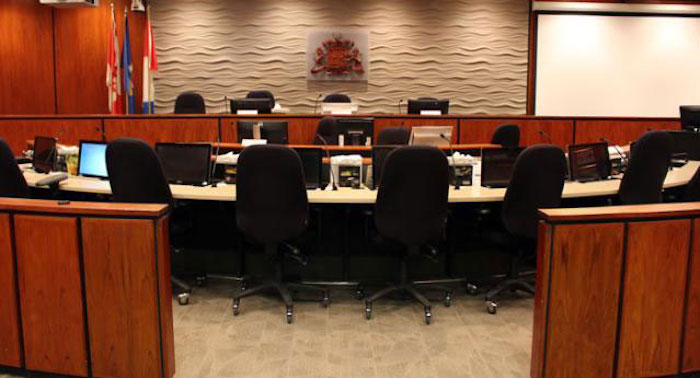Business
Tips From Tundra – Optimize Your Resume For ‘The New Normal’

The landscape of employment for job-seekers has changed dramatically since the beginning of the pandemic in Alberta. As of May 2020, the Alberta Government reports an unemployment rate of 15.5%. Combine that with experienced employees furloughed from various sectors, new graduates and those seeking a new career direction may have a steeper hill to climb than before. We continue to discover what is the new normal for Alberta post-pandemic, we revisit the topic of how to put your best foot forward when optimizing your resume for your job hunt.

Tundra Technical Solutions is a global recruitment agency headquartered in Toronto, Ontario. Since 2004, Tundra has grown quickly, today operating offices across North America, Europe and Asia. They work with top global partners actively seeking the best talent in multiple sectors such as finance, insurance, healthcare, technology, retail, energy, utilities, construction, mining, telecommunications, transportation and government to name a few.
Ever considered utilizing the skills a recruitment agency may have to offer? It may be the right time considering the volume of applicants in the hundreds on certain job postings, as shown in the image below. We spoke with Christina Esposito, Marketing and Communications Lead and Internal Recruiter for Tundra Technical Solutions on ways to optimize your resume for recruiters in the new normal.

(Source: LinkedIn Job Search)
Should your resume be written chronologically or functionally?
The key difference here is whether or not your work experience should be written as a timeline of your previous positions or should it be laid out in the form of what experience you feel is best suited for the position you are applying for. From a recruiters perspective, Christina mentions:
“We like to see a reverse chronological order of previous work experience. We recommend placing all of your technical skills right at the top of your resume, and then go into your most recent experience.”

Should you tailor your resume for the specific job you are applying for?
Say you are actively applying to open positions, tailoring your resume can be a time consuming task if your objective is to apply to the first 10-20 open positions you find. To that point, applying to everything you see can be detrimental to your efforts when utilizing a recruiter. Keep in mind, there is a human processing your candidate profile, and their efforts are to find the best talent for their employers. Christina offers a recommendation that can mitigate time for both the job seeker and recruiter:
“ we absolutely want to see someone tailoring their resume that matches the job description. A good tip for someone who might not want to go through a whole overhaul, is to first make sure that the job you’re applying to is relevant to your experience, recruiters can see if you’re applying to the first jobs that pop up for example. It becomes clear they haven’t really looked into the position they’re applying for. So, a lot of care and detail should go into those applications if you want to have the greatest success. Ultimately you want to make sure that the job description lines up with your skills…”

What is the best resume format that can be read autonomously through recruitment software?
As mentioned above, some positions can receive hundreds of applications. If you haven’t been made aware by now, recruiters utilise software called an Applicant Tracking System (ATS) or what is referred to as resume parsing, which allows the hundreds of resumes to be read and processed, thus creating a candidate profile highlighting the most relevant information to send to an employer. Say you spent endless hours on the most aesthetically pleasing resume to give that ‘wow’ factor, that may have been a solid practice in the past, but ATS systems have difficulty processing these resume formats, thus your candidate profiles could be lacking important information.
“I would recommend against a PDF format. The reason being is that Microsoft Word documents are the most legible and easiest to parse with. The way the ATS works is, someone sends in the application, the ATS picks those keywords from their resume and matches them to the actual job description. Inserting images or a lot of text can make it difficult for recruiters to look up your profile in the future.”
What should NOT be included on your resume?
Some of these you may already know, but let’s be clear, having a resume with only relevant information is your best chance of success. Working as a retail store manager I had received countless resumes from individuals seeking employment. During that time, I had encountered some of the most outrageous and creative resumes from all walks of life. By no means am I a recruitment specialist, but sticking to the basics was a winner for my new hires during that time. Christina offers the perspective of a recruiter for what not to put on your resume:
“Jumping right into things like objectives or hobbies is fine, but we would recommend against it because the longer you make your resume, you can decrease the chances of someone reading the full document. Best practice is to always keep your resume one to two pages with only relevant information. For industry veterans that have lengthy work history, you should only list the most recent and relevant experience.”
Should you include links to your social media?
Social media plays a significant role in the recruitment process for both agencies and hiring managers. LinkedIn has become a major part of what we call this ‘new normal’, with more than 20 million companies listed on the site and 14 million open jobs, it’s no surprise that over 75% of people who recently changed jobs used LinkedIn to inform their career decision. When it comes to social media, Christina offers her recommendations:
“90% of the time, recruiters are looking at your LinkedIn or Twitter. We want to make sure we get a holistic view of the applicant. 40% of our hires last year were candidates we sourced directly from LinkedIn. We have situations where we have candidates that look great on paper, but after we do some investigating. He/she doesn’t actually prove to be the person he/she was saying on paper. It’s a point of validation and puts a face to a name. My recommendation would be to keep your social media profiles clean, descriptive and showcase your accomplishments, especially if you have a public profile.”
This information should offer you some insight into how the employment landscape is changing and what best practices to implement for your job hunt. Who wouldn’t want to save time and effort on what can be an arduous task?

If you would like to learn more about Tundra Technical Solutions, speak to one of their experienced recruiters or to view their available positions in Alberta, check out their website here or message them on their Facebook below.
For more stories, visit Todayville Calgary
Business
CBC’s business model is trapped in a very dark place

I Testified Before a Senate Committee About the CBC
I recently testified before the Senate Committee for Transport and Communications. You can view that session here. Even though the official topic was CBC’s local programming in Ontario, everyone quickly shifted the discussion to CBC’s big-picture problems and how their existential struggles were urgent and immediate. The idea that deep and fundamental changes within the corporation were unavoidable seemed to enjoy complete agreement.
I’ll use this post as background to some of the points I raised during the hearing.
You might recall how my recent post on CBC funding described a corporation shedding audience share like dandruff while spending hundreds of millions of dollars producing drama and comedy programming few Canadians consume. There are so few viewers left that I suspect they’re now identified by first name rather than as a percentage of the population.
Since then I’ve learned a lot more about CBC performance and about the broadcast industry in general.
For instance, it’ll surprise exactly no one to learn that fewer Canadians get their audio from traditional radio broadcasters. But how steep is the decline? According to the CRTC’s Annual Highlights of the Broadcasting Sector 2022-2023, since 2015, “hours spent listening to traditional broadcasting has decreased at a CAGR of 4.8 percent”. CAGR, by the way, stands for compound annual growth rate.
Dropping 4.8 percent each year means audience numbers aren’t just “falling”; they’re not even “falling off the edge of a cliff”; they’re already close enough to the bottom of the cliff to smell the trees. Looking for context? Between English and French-language radio, the CBC spends around $240 million each year.
Those listeners aren’t just disappearing without a trace. the CRTC also tells us that Canadians are increasingly migrating to Digital Media Broadcasting Units (DMBUs) – with numbers growing by more than nine percent annually since 2015.
The CBC’s problem here is that they’re not a serious player in the DMBU world, so they’re simply losing digital listeners. For example, of the top 200 Spotify podcasts ranked by popularity in Canada, only four are from the CBC.
Another interesting data point I ran into related to that billion dollar plus annual parliamentary allocation CBC enjoys. It turns out that that’s not the whole story. You may recall how the government added another $42 million in their most recent budget.
But wait! That’s not all! Between CBC and SRC, the Canada Media Fund (CMF) ponied up another $97 million for fiscal 2023-2024 to cover specific programming production budgets.
Technically, Canada Media Fund grants target individual projects planned by independent production companies. But those projects are usually associated with the “envelope” of one of the big broadcasters – of which CBC is by far the largest. 2023-2024 CMF funding totaled $786 million, and CBC’s take was nearly double that of their nearest competitor (Bell).
But there’s more! Back in 2016, the federal budget included an extra $150 million each year as a “new investment in Canadian arts and culture”. It’s entirely possible that no one turned off the tap and that extra government cheque is still showing up each year in the CBC’s mailbox. There was also a $93 million item for infrastructure and technological upgrades back in the 2017-2018 fiscal year. Who knows whether that one wasn’t also carried over.
So CBC’s share of government funding keeps growing while its share of Canadian media consumers shrinks. How do you suppose that’ll end?
We make content free for you but we require support to create journalism. Please consider a free subscription to our newsletter, or donate an amount of your choice.
Business
PBO report shows cost of bureaucracy up 73 per cent under Trudeau

From the Canadian Taxpayers Federation
The Canadian Taxpayers Federation is calling on the federal government to rein in the bureaucracy following today’s Parliamentary Budget Officer report showing the bureaucracy costs taxpayers $69.5 billion.
“The cost of the federal bureaucracy increased by 73 per cent since 2016, but it’s a good bet most Canadians aren’t seeing anywhere close to 73 per cent better services from the government,” said Franco Terrazzano, CTF Federal Director. “Taxpayers are getting soaked because the size and cost of the federal bureaucracy is out of control.”
Today’s PBO report estimates the federal bureaucracy cost taxpayers $69.5 billion in 2023-24. In 2016-17, the cost of the bureaucracy was $40.2 billion. That’s an increase of 72.9 per cent.
The most recent data shows the cost continues to rise quickly.
“Spending on personnel in the first five months of 2024-25 is up 8.0 per cent over the same period last year,” according to the PBO.
“I have noticed a marked increase in the number of public servants since 2016 and a proportional increase in spending,” said Parliamentary Budget Officer Yves Giroux. “But we haven’t seen similar improvements when it comes to service.”
The Trudeau government added 108,793 bureaucrats since 2016 – a 42 per cent increase. Canada’s population grew by 14 per cent during the same period. Had the bureaucracy only increased with population growth, there would be 72,491 fewer federal employees today.
The government awarded more than one million pay raises to bureaucrats in the last four years, according to access-to-information records obtained by the CTF. The government also rubberstamped $406 million in bonuses last year.
“The government added tens of thousands of extra bureaucrats, rubberstamped hundreds of millions in bonuses and awarded more than one million pay raises and all taxpayers seem to get out of it is higher taxes and more debt,” Terrazzano said. “For the government to balance the budget and provide tax relief, it will need to cut the size and cost of Ottawa’s bloated bureaucracy.”
-

 Brownstone Institute2 days ago
Brownstone Institute2 days agoThe Most Devastating Report So Far
-

 Business2 days ago
Business2 days agoCarbon tax bureaucracy costs taxpayers $800 million
-

 ESG1 day ago
ESG1 day agoCan’t afford Rent? Groceries for your kids? Trudeau says suck it up and pay the tax!
-

 Daily Caller1 day ago
Daily Caller1 day agoLos Angeles Passes ‘Sanctuary City’ Ordinance In Wake Of Trump’s Deportation Plan
-

 John Stossel1 day ago
John Stossel1 day agoGreen Energy Needs Minerals, Yet America Blocks New Mines
-

 COVID-192 days ago
COVID-192 days agoDr. McCullough praises RFK Jr., urges him to pull COVID shots from the market
-

 Alberta1 day ago
Alberta1 day agoProvince considering new Red Deer River reservoir east of Red Deer
-

 MAiD2 days ago
MAiD2 days agoOver 40% of people euthanized in Ontario lived in poorest parts of the province: government data






